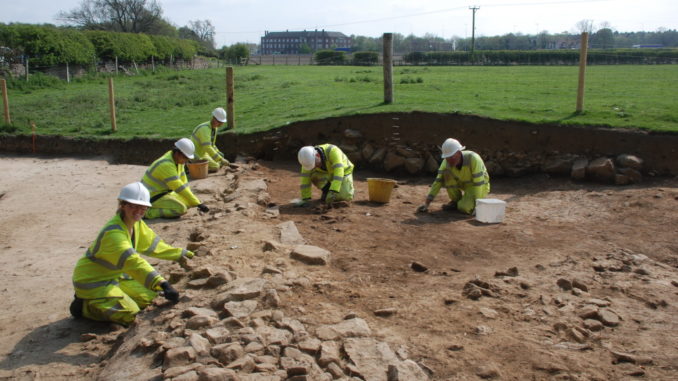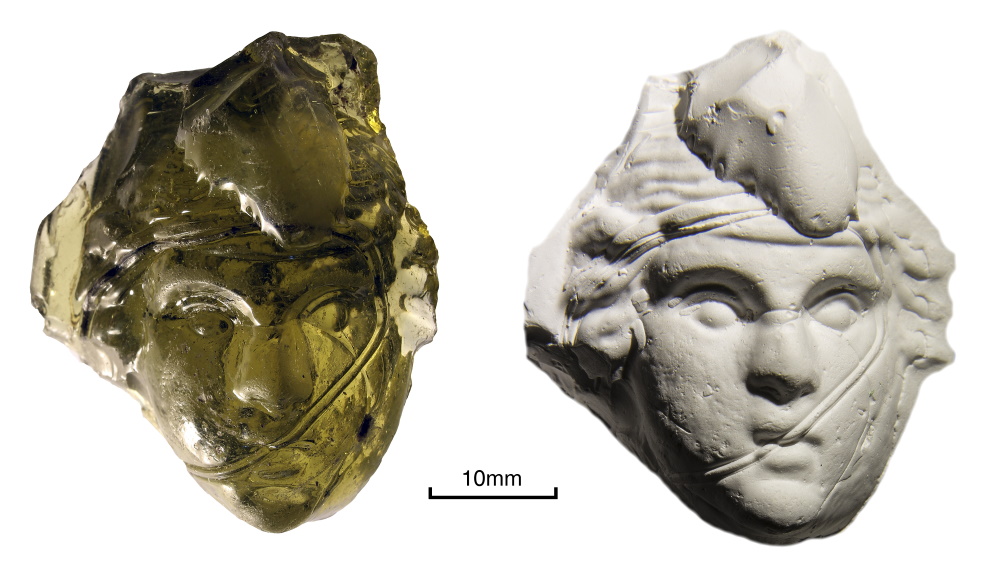
Two thousand years ago Romans not only built roads but also had to repair potholes, a new book on archaeological finds unearthed during the upgrade of the A1 between Leeming and Barton has revealed.
Discoveries made during Highways England’s upgrade of the A1, particularly around Scotch Corner, have been described by Historic England as one of the top ten archaeological discoveries of the decade.
During the work, archaeologists also discovered the Romans settled in the area at least a decade earlier than previously thought, producing coins and interacting with local people.
The finds are documented in a new book out today.

Highways England worked with AECOM, lead designers for the A1 project, who were responsible for managing the archaeological work and analysis.
Dr Jonathan Shipley, AECOM principal heritage consultant, said: “Scotch Corner is now known as a key junction on the Highways England network, but the remains identified show it was also the site of a much older junction.
“The remains include evidence of an Iron Age settlement where coin production, the first north of the River Humber, was potentially taking place.
“The extraordinary objects provided us with an insight of the interaction between the Romans and the local population.
“Other fascinating finds include evidence for the upkeep of the Roman road network, with the site revealing potholes that had been repaired.
“Evidence of investment in the road infrastructure during Roman times links well with the recent investment in infrastructure which resulted in the discovery of the site.”

Before major road projects begin, teams of archaeologists carefully peel back the surface of construction sites to ensure that archaeological remains are preserved and recorded.
By commissioning experts and working closely with the country’s heritage bodies and local authorities, Highways England says it can ensure knowledge is conserved and our understanding of the past is enhanced.
Highways England’s principal cultural heritage advisor, Jim Hunter, said: “At Highways England we try to have as little effect on the historic environment as we can.
“Where the disturbance of archaeological remains is unavoidable we are committed to recording them to as high a standard as possible so that the information they contain is available for everyone now and in the future.
“This is an exciting publication. Where important remains such as those at Scotch Corner are revealed we are proud to be able to contribute to the knowledge of the past through our funding of the archaeological work and we are delighted to have been able to add to the understanding of the Roman conquest and settlement of the north of England in this way.”
The A1 project finds are detailed in ‘Contact, Concord and Conquest: Britons and Romans at Scotch Corner’ published this week by Northern Archaeological Associates.
The archaeological excavations demonstrated how Scotch Corner was and remains a focal point along this north / south route.
The upgrade has helped experts to understand the interaction between the Romans and the local population around the beginning of the 1st millennium AD.
It was a time of relative peace and the excavations show how prosperous locals showered the invading Romans with gifts of exotic objects and foods to maintain harmony.
The new book describes the unearthing of engineered roads, the discovery of potholes and how the Romans fixed them – not with today’s asphalt or concrete but with local limestone.
Experts say the publication represents a major step forward in understanding of the Roman conquest of the north, and will set the agenda for studies into the Late Iron Age and Roman Conquest of the north for the next 25 years.
Contact, Concord and Conquest: Britons and Romans at Scotch Corner is the second of three publications detailing the remarkable archaeological excavations carried out for Highways England’s upgrade of the A1 between Leeming and Barton in North Yorkshire.
Published by Northern Archaeological Associates (NAA) of Barnard Castle, the digital book is available free of charge from the Archaeology Data Service: https://doi.org/10.5284/1078330


Be the first to comment